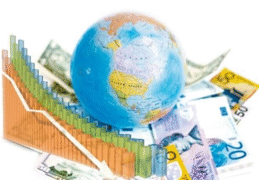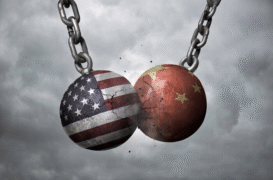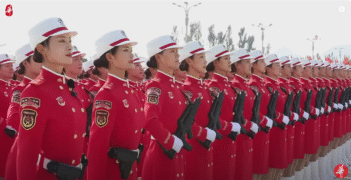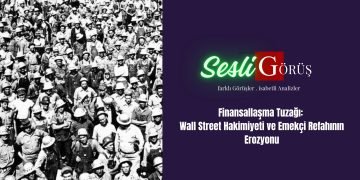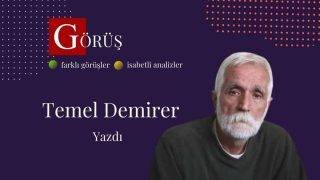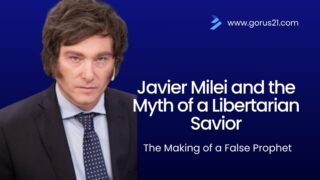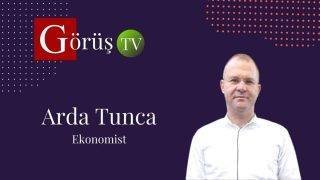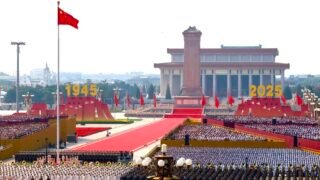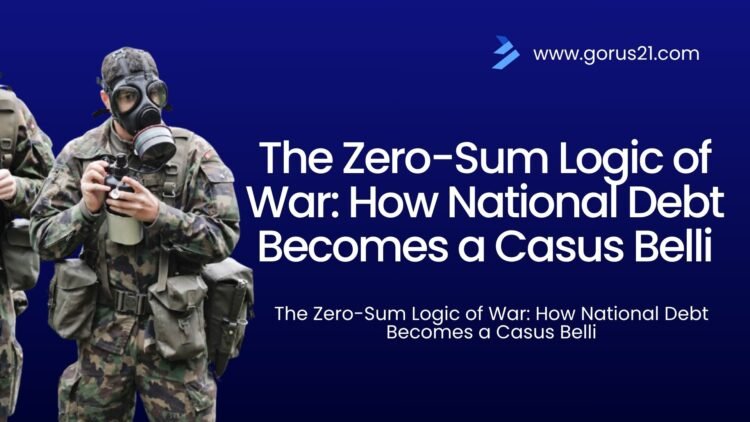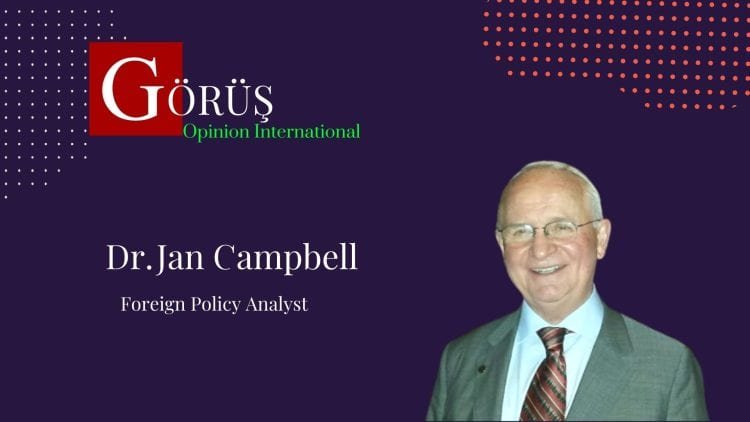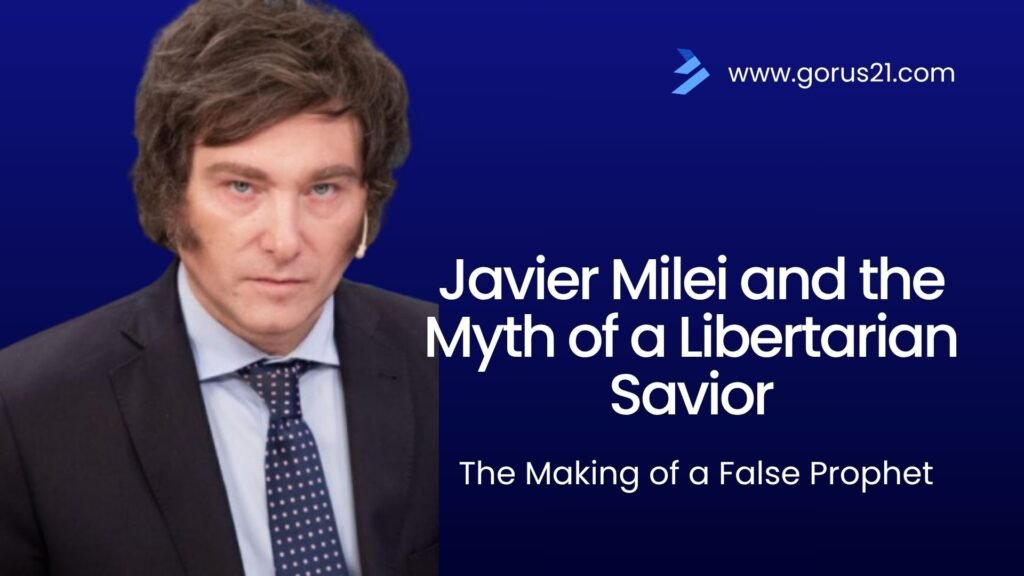
The Javier Milei experiment has unraveled, plunging the Argentina economy back into crisis. The U.S. responded with a massive $20 Billion Swap Line, but the failure of Shock Therapy remains clear.
The Brutal Cost of “Fiscal Victory”: Argentina Poverty Rate Soars
Just six months ago, Argentina’s President Javier Milei was hailed across the globe as a libertarian savior, a radical figure promising to dismantle a century of state intervention and usher in a new era of economic freedom. His “shock therapy” was an economic experiment that captivated and, briefly, encouraged the markets. Yet, today, the experiment has unraveled with terrifying speed, plunging Argentina right back to the brink of a full-scale financial panic. The peso is in free fall, inflation is surging again, and the specter of political collapse looms large.
This stunning reversal forced an immediate, and highly geopolitical, response. The urgency became undeniable on September 22nd when U.S. Treasury Secretary Scott Besant declared Argentina a “systemically important U.S. ally”—a phrase carrying huge weight that signals a serious commitment from Washington. Besant explicitly promised that “all options for stabilization are on the table,” topped it off with the highly political slogan, “Argentina will be great again.” This signaled that Washington views the crisis as more than just an economic problem for Buenos Aires; they see it as both a systemic risk and a geopolitical opportunity, willing to put significant resources on the line to prevent a default and the chaos that would follow.
The centerpiece of this intervention is a massive $20 billion swap line from the powerful U.S. Treasury’s Exchange Stabilization Fund (ESF) to Argentina’s central bank. The ESF is a pot of over $200 billion, controlled directly by the Treasury Secretary, allowing the executive branch to intervene in currency markets or offer emergency loans without needing a slow congressional sign-off. Its use signals a high-level strategic political move, bypassing the slower channels of the IMF or standard foreign aid. The markets certainly got the message: after Besant’s post, the peso bounced back 4%, Argentine bonds rallied, and stocks jumped 6%.
But this relief is mostly psychological; it buys Milei crucial time, but it does not, in any way, fix the underlying policy choices and structural failures that brought the nation to the verge of collapse.
The Stunning Reversal: How Shock Therapy Crumbled
To grasp the urgency of Besant’s intervention, one must look at the week preceding the announcement. The situation was critical, with Argentina’s central bank desperately burning through over a billion dollars in reserves in just a few days in a futile attempt to defend the peso and hold its government-imposed trading band. This desperate maneuver failed: the peso briefly breached the trading band, hitting 1,475 pesos to the dollar. That single event sparked absolute panic, instantly reviving memories of past defaults and fueling investors’ jumpiness, already heightened by political chaos and corruption rumors near Milei.
The speed of the turn is staggering, given that only six months prior, Milei was securing over $40 billion in loans from multilateral organizations, demonstrating significant international confidence. More impressively, his policies had crushed inflation, which dropped from nearly 300% in April down to 34% by August.
The fatal miscalculation, however, lay in his singular focus on crushing inflation at almost any cost. The primary tool used was the maintenance of an artificially strong peso. Milei seemed to prioritize a tactical win over long-term strategic health, believing that keeping the peso strong was key to anchoring inflation expectations and showing control. The central bank intervened aggressively, defending the trading band by keeping interest rates high and selling off dollars daily.
While this achieved short-term success with inflation figures, the cost was huge and unsustainable. Keeping the peso strong hammered exports, making them too expensive, which widened the trade deficit. Most critically, it dangerously bled the nation’s precious dollar reserves dry. When the political winds inevitably shifted—as the corruption scandal hit—the government had already spent its buffer, leaving it dangerously exposed and near collapse.
The Brutal Cost of “Fiscal Victory”
Milei’s radical agenda, rolled out in December 2023, involved hyper-austerity, shrinking the state, and ripping off price controls. The immediate impact was brutal: an overnight 54% devaluation of the peso coupled with the removal of price controls on essentials like food and medicine. Medicine prices jumped 40%, and overall consumer prices shot up over 71% in just his first three months, pushing annual inflation near 290% by April 2024.
The administration argued this pain was necessary for fiscal victory, and on paper, they achieved it, announcing a budget surplus of 1.76 trillion pesos—the first in 14 years. However, the surplus was built almost entirely on savage, short-sighted cuts, not growth.
Pensions and Social Safety Nets: Cuts to social benefits, mostly pensions, accounted for nearly a third of the entire reduction in government spending.
Employment and Wages: Nearly 39,000 public sector jobs were cut, and public sector wages for those who remained dropped 14.5% in real terms. The average working Argentine was earning less while paying drastically more for everything.
Gutting the Future: The most alarming cut was to capital expenditures. Central government spending on infrastructure and public works was reduced by a colossal 77.2% in real terms. This deep freeze stops long-term projects and fundamentally damages long-term GDP growth.
Human Capital Brain Drain: Public funding for universities dropped over 25%, and research spending was cut by 31%, accelerating the brain drain.
The cumulative social outcome was an explosion of poverty. The poverty rate jumped sharply from 42.5% in late 2023 to 52.9% in the first half of 2024—an increase of over 10 percentage points in just six months.
The Political Backlash and The Market Trigger
All this intense social pain created enormous political pressure that eventually exploded, triggering the latest market panic and necessitating the U.S. bailout.
The flashpoint was the Buenos Aires provincial elections. The defeat there was humiliating for Milei’s coalition. The Peronist opposition leader, Axel Kicillof, defeated Milei’s candidate by over 13 points.
For investors, this result was “the writing on the wall.” They read the result as a sign that the political runway for the austerity program had hit zero. The public had lost patience, feeling the pain of the subsidy and pension cuts but seeing no improvement in their own lives.
Instability and Loss of Control
The instability was not confined to the ballot box: a corruption scandal involving his sister, who is also his chief of staff, damaged the administration’s “outsider cleaning things up” image. Simultaneously, his alliances in Congress started falling apart, and opponents managed to overturn one of his key spending vetoes. Losing the mandate on the streets, losing confidence in the markets, and losing control in the legislature created a crisis that was almost inevitable, leading directly to the final peso panic that the U.S. intervention was designed to halt.
President Milei’s struggle is the latest chapter in Argentina’s much longer, century-long tragic story of economic instability. This constant cycle of volatility seems to hinge on dramatic swings between two failed economic approaches.
The Pendulum Swings: Neoliberalism vs. Neo-Developmentalism – The Convertibility Plan
In the 1990s, Argentina attempted the neoliberal approach, involving mass privatization and, crucially, the Convertibility Plan. This plan established a rigid, legally mandated rule: one peso equaled one U.S. dollar. While it instantly killed hyperinflation, it removed all monetary flexibility, leading the peso to become massively overvalued over time. This crushed exports and devastated local industry, resulting in an economic time bomb that exploded spectacularly in 2001, causing a default, mass protests, and the infamous Corralito freezing bank accounts.
The pendulum then swung violently back. Post-2001, the Kirchner governments implemented a neo-developmentalist response, focusing on state activism, social spending, and maintaining a deliberately undervalued currency to boost exports and protect local industry. They achieved strong growth, averaging almost 9% between 2003 and 2007. However, this model eventually hit its own limits, failing to fix underlying structural issues and leading to rising inflation and new currency controls.
Institutional Capture: The Core Problem
Neither extreme seems to work long-term. Many analysts point to the core problem being weak institutions captured by elites in a deeply unequal society. Whether it’s the central bank or regulators, institutions tend to serve powerful interests rather than the broader public good. This institutional capture leads to abrupt, cyclical policy U-turns, making it impossible to build anything durable. This policy volatility makes Argentina a perpetual hostage to external markets, ensuring that every reform attempt hits a wall where the need for more dollars gives lenders huge power over domestic policy.
Despite the political backlash and market panic, Milei has not given up on his ultimate goal: full dollarization.The irony is that the current currency situation is incredibly risky. Due to aggressive capital controls and policies to crush demand, the peso has actually appreciated massively against the dollar recently. This overvaluation is a huge risk, as there is enormous pent-up demand for dollars waiting to rush out if controls are eased, potentially triggering another massive devaluation.
If Milei actually achieved full dollarization, the biggest, irreversible risk would be the complete loss of monetary autonomy. Argentina would hand over control of its interest rates and money supply to the U.S. Federal Reserve, which sets policy for the U.S. economy, not Argentina’s. Crucially, Argentina would lose the ability to use monetary policy to respond to its own economic shocks. If the country cannot devalue its currency during a downturn to make its exports cheaper, it is stuck—a scenario that led to brutal austerity for countries locked into the Eurozone. Furthermore, analysts widely agree that the amount of dollar reserves needed for a clean dollarization transition is currently unrealistic, with potentially $50 billion or more required.
Bailout Versus Reform: The Bleak Conclusion
The massive U.S. bailout package provides vital breathing room and stops the immediate financial freefall. It helps shore up the peso for now and temporarily aids depleted reserves. However, the money is merely a purchase of time, not a guarantee of success.
The bailout does not touch any of the deeper structural issues that plague Argentina and led to the collapse of Milei’s program. It doesn’t fix the deep-seated political problems, restore the trust lost through corruption scandals, or reverse the long-term damage inflicted by the austerity program, particularly the shocking 77% cut to infrastructure investment.
The destructive cycle that has defined Argentine history—characterized by elite capture, abrupt policy volatility, and deep dependence on foreign money—is still firmly in place.
As IMF officials have warned, U.S. help is essentially pointless without a credible economic plan, political stability, and restored trust—all things Argentina currently lacks. The money buys Milei a brief reprieve. The discussion ultimately ends on this incredibly high-stakes gamble: can stability bought purely with foreign cash sustain a government that appears to have lost its domestic political mandate? If this whole thing collapses again, despite the bailout, it suggests that no ideology—be it radical libertarianism or state-led development—can succeed until those deeper structural failings and institutional weaknesses are genuinely addressed.
Sources:
Argentina reports a drop in poverty under President Milei, but many say life is harder: https://apnews.com/article/argentina-economy-poverty-milei-austerity-inflation-061bbba174706475a255c6b871953009
US negotiates $20 billion bailout and debt purchase with Argentina: https://english.elpais.com/economy-and-business/2025-09-24/us-negotiates-20-billion-bailout-and-debt-purchase-with-argentina.html
The History of Argentina’s Crisis: A complete guide: https://worldhistoryjournal.com/2025/04/02/history-argentina-crisis-complete-guide/
Argentina’s Economic Shock Therapy: Assessing the Impact of Milei’s Austerity Policies and the Road Ahead: https://primeeconomics.org/articles/argentinas-economic-shock-therapy-assessing-the-impact-of-mileis-austerity-policies-and-the-road-ahead/
Can ARGENTINA FAIL Again? Milei’s Project Suffers a Crushing Defeat: https://www.youtube.com/watch?v=llBECrFHOjA
The Link Between Neoliberalism and Austerity in Sociology: https://easysociology.com/sociology-of-ideology/the-link-between-neoliberalism-and-austerity-in-sociology/
The real reason Argentina’s economy is such a mess: https://www.youtube.com/watch?v=E7MzfNTSk4A
Can a US bailout save Argentina’s Javier Milei?: https://www.ft.com/content/792c1bc0-b983-4da5-90a5-745d9f714ea9
Introduction: the Crisis and Austerity Neoliberalism:
Rise and Collapse of Neoliberalism in Argentina: The Role of Economic Groups: https://journals.sagepub.com/doi/10.1177/0169796X04050957
Under President Milei, the worst economic crisis in decades puts Argentine ingenuity to the test: https://apnews.com/article/argentina-economy-crisis-javier-milei-president-peronist-crisis-8a8ac450fa5f7942f61ab092fdd4ed15

